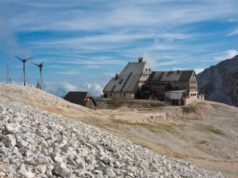
The Love Canal Controversy: Environmental Disaster that Shocked America
The Love Canal, a small canal in the town of Niagara Falls, New York, became synonymous with environmental disaster in the late 1970s. It was the site of one of the most terrible occurrences of toxic contamination in US history. The history of the Love Canal disaster is a cautionary tale of corporate greed, government negligence, and environmental damage that has had far-reaching consequences. This article will explore the Love Canal controversy in-depth, and provide an updated perspective on the disaster using government resources.
The Love Canal: A Brief History
The Love Canal was created as part of a hydroelectric project by William T. Love in 1892. Its purpose was to provide water and hydroelectric power to the surrounding area. However, the project failed due to financial difficulties, and in 1900, the Hooker Chemical Company purchased the land.
Hooker Chemical Company used the Love Canal area as a disposal site for chemical waste from 1942 to 1953. Nearly 22,000 tons of hazardous waste material was dumped in the canal and surrounding areas during that period. The site was chosen because it was considered a waste area that would never be developed.
Hooker Chemical Company covered the landfill with a thick layer of clay before selling the property to the Niagara Falls School Board for $1 in 1953. The company claimed that the waste was safely contained and would cause no harm. The landfill was partially filled with soil, and the area was turned into a residential neighborhood.
The Disaster Unfolds
In the 1970s, many Love Canal residents reported unusual health problems, including headaches, rashes, and respiratory illnesses. They also noticed a strange chemical odor coming from the canal and surrounding areas. They knew something was wrong, but they had no idea what was causing it.
In 1978, New York State health officials began to investigate the area after residents demanded something be done. The investigation revealed that the Love Canal was leaking toxic chemicals into the ground and groundwater, which was making its way into nearby basements and homes. Some of the chemicals that were detected included dioxin, benzene, and trichloroethylene, all known to cause cancer and other illnesses.
The situation was so dire that President Jimmy Carter declared a federal state of emergency on August 7, 1978. The declaration led to the relocation of more than 800 families and the eventual cleanup of the site. According to the U.S. Environmental Protection Agency (EPA), the Love Canal disaster was one of the most serious environmental disasters in American history.
The Aftermath
The Love Canal disaster opened the eyes of many Americans to the dangers of toxic waste and the need for stricter regulations. It also gave birth to the Superfund program, a federal government initiative to help clean up hazardous waste sites across the United States.
The Hooker Chemical Company was held responsible for the cleanup costs, which exceeded $400 million, and was forced to pay the state of New York $129 million for damages. Hooker Chemical Company was also held liable for a class-action lawsuit brought on by Love Canal residents and paid $20 million in damages to affected residents.
Updated Information on the Love Canal Disaster
Since the Love Canal disaster, much has been done to contain and clean up the area. According to the EPA, the Love Canal site is now a “Superfund” site, which means it is a location that requires action to address environmental contamination. The area remains monitored by the EPA, and work is ongoing to prevent further contamination of the canal and surrounding neighborhoods.
The Love Canal disaster also led to significant legislative changes. One of the most noteworthy was the creation of the Comprehensive Environmental Response, Compensation, and Liability Act (CERCLA) in 1980. The act allowed the federal government to hold polluters accountable for environmental damage and hazardous waste cleanup costs.
The Love Canal disaster had far-reaching consequences that are still felt today. It led to stricter environmental regulations, increased public awareness of toxic waste issues, and the establishment of programs to help clean up hazardous waste sites. The lessons learned from the Love Canal tragedy continue to influence environmental policy in the United States and around the world.
Conclusion
The Love Canal disaster was a dark chapter in American history. It exposed the devastating effects of corporate greed, government negligence and its impact on human health. Today, the Love Canal serves as a painful reminder of what happens when toxic waste is not properly managed. The disaster had significant consequences, and while much has been done to remedy the situation, it remains an ongoing challenge that requires ongoing work.
The Love Canal disaster should serve as a call to action for individuals, companies, and governments to take responsibility for environmental stewardship. We must hold our elected officials accountable for enforcing environmental regulations and ensuring that contaminants are kept out of our communities.
In conclusion, the Love Canal controversy should serve as a warning that we need to take care of our planet and protect it from toxic waste and hazardous materials. We need to work together to create a sustainable future and ensure that tragedies like the Love Canal disaster are never repeated again.
A certain class of refugee would bridge the gap between something that is man-made and something that is an uninhabitable disaster worthy of refugee relief. The Love Canal Controversy is the perfect argument for this function. Love Canal, a subset within Niagara Falls, New York, was intended as a model community and hospitable home for its residents, but belying its cute name, it was really a toxic waste dump disguised as a town.
The initial plans for the municipality called for the development of groups of houses and parks that would stand as shining examples of a residential community as well as the namesake canal before Mr. William Love, the developer, ran out of funding and the site became a chemical dump. In time, though, the Niagara Falls population began to expand, and in need to acquire land, residential officials bought the ground above the site, despite the possibility of toxic chemicals underneath. Upon discovery of numerous health defects and positive tests for toxins, the site was declared to be in state of emergency, and evacuation of all resident was ordered.
The move to help refugees then, in this case, was to evacuate the town and contain the extent of the contamination. Refugee relief came in the form of state and government funds used to reimburse the town residents and help refugees of Love Canal. The Love Canal fiasco, aside from being an environmental health and policy planning wake-up call, also set the precedent for the declaration of an environmental disaster area and expanded the idea that environmental causes could be used to determine refugee status in the public consciousness.























